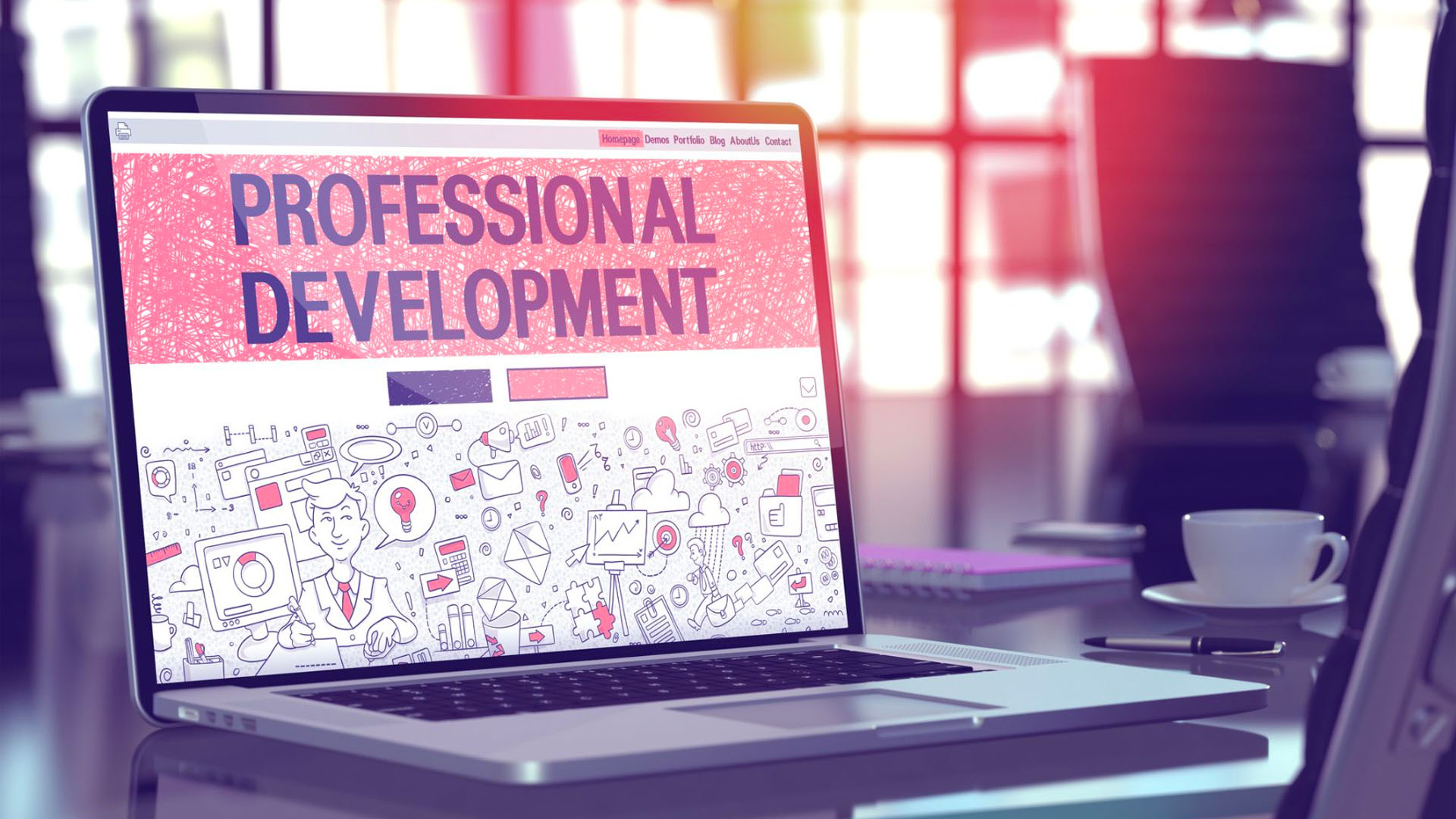Why districts should consider leveraging online learning platforms for Professional Growth, Staff Development, and Continuous Learning
Making the case for why PD matters and why leaders should look “inward” and online for growth.
Teacher burnout is at an all-time high. Teacher turnover rates—in Indiana and nationwide—are increasing and are becoming increasingly expensive for districts. Educators and school districts nationwide are struggling. Budgets are tight. Time is short. Tensions are high.
At the same time, we’re all growing. Educators are rapidly learning new strategies to teach their curriculum and new tools and new ways to engage and reach their students. Families are finding their way through the chaos, learning alongside their children and finding new channels to connect with their child(ren)’s teacher(s), and school districts, on the whole, have found new ways to look at assessment, to evaluate curriculum tools and adopted resources, and to prioritize spending to more effectively support classrooms, teachers, and students.
Despite all of the unknowns, the COVID pandemic has caused school leaders and their teachers to rethink their approach to instruction, to reevaluate their understanding of technology integration, and to reshape their model towards assessment and evaluation.
As school leaders, we must continue to evolve—in how we connect with families, build relationships within our school community, and develop and grow the expertise of our staff.
While it may not be the answer for every district, in this blog and in my upcoming Keep Indiana Learning OnDemand series, I’ll take a hard look at the potential value that a Virtualized Professional Learning environment can have on your school district. The series will examine how school and district leaders can build a foundation using the LMS tools already available and explore the benefits, drawbacks, and long-term impact of initiating an online model for continuous learning that could lead to big-time payoffs.
As my district has seen, and as districts across the state are encountering, educators need an opportunity to refresh their vision of the optimal learning environment and to rediscover an excitement for personal growth.
But things are fragile. Tensions are high as teachers continue to grapple with finding a balance in their workload while managing life outside of the classroom as well.
If we want professional development to result in a win for our school or district, then we need to take the time and setting into consideration when we propose it to our staff. Nobody wants “another thing” added to their already-overflowing plate, and odds are pretty good that offering PD the same way you did prior to COVID may no longer pay the dividends that, perhaps, it once did.
Trying to offer that by scheduling an upcoming faculty meeting or by challenging them to attend regular after-school training sessions might achieve your short-term agenda, but it will also likely cause many teachers on your staff to roll their eyes, mumble under their breath, and grudgingly go through the motions and comply with the request.
So, let’s brainstorm:
- As the classroom environment has continued to shift, teachers are shifting to meet the new dynamic. How are you changing to meet it, as well?
- In times such as this, how do we win with PD? What professional development have you offered this year to your staff? Do you feel it had a positive return on instruction (ROI)?
- How do principals and central office leaders keep the momentum of teacher growth moving forward?
- What has changed with the way you observe, evaluate, and provide feedback to your staff?
- Looking toward the future, what approach will you take that continues to challenge and sharpen your staff, introduce new initiatives, provide learning opportunities on targeted subjects, or meet the specific objectives and goals that are outlined in your school improvement plans?
And recognizing that we’re in the people business, is there a way to make all of this convenient? Can you accomplish the ends we just considered while making learning available to our people on their own schedule, at their own pace, or when they are ready and willing to learn?

Now and Later: Growth Matters
Surveys reveal that as much as 75% of people started home improvement projects during the last six months because of the pandemic, and the same number have planned additional improvements over the next six month period. Whether the idea was focused on remodeling a basement, building a bar, or expanding an outdoor living area, Americans have responded by gobbling up materials (many that were already in short supply), resourcefully pivoting or improvising when faced with obstacles, and learning new skills to enhance their lives.
Even when budgets were at their tightest, people sought change and self-improvement. And, most importantly, they put in the time to learn how to do it before tackling the project at hand. The impact that COVID had is readily apparent by looking at YouTube video trends of average users, worldwide, with people going virtual to learn from others with more experience and understanding.
The same can be said about educators as well. YouTube’s data reveals that teachers sought out advice on Remote and Distance learning from their colleagues. Along with learning virtually, teachers improvised to engage their students in this new method of learning and found unique strategies to mimic their classroom environment at home. Teachers have shown that they are ready for a virtually different learning environment.
The shift that Instructional Leaders need to make is just as daunting as the shift that our teachers needed to make, but the results have a much greater potential to make a larger impact.
Consider:
- In your school or district, how have you leveraged virtualized learning with your staff?
- Have your faculty meetings moved to Zoom events or short, recorded snippets sent by email?
- Have you conducted classroom observations, virtually, by popping into remote teaching sessions or by taking a closer look at teacher LMS content?
- Has your instructional feedback been altered to include recorded observations for teachers to reflect on or to include annotated comments on digital learning materials?
If the answer to any or all of the questions above is “Not Yet,” I’d encourage you to get started now!
Virtualized learning—for immediate or ongoing Professional Development, staff meetings, one-on-one teacher conversations, classroom observations, and a bucket-full of other purposes—offers educators an opportunity to continually grow, but in a more autonomous environment; and when done right, in an environment surrounded by supportive colleagues who share a common investment in learning.
Imagine conducting a teacher observation, virtually. Ask your staff to review their online presence, their approach to instructional design (and/or assessment), and to share a self-reflection with you. Just like a teacher provides feedback on submitted student work, you too, would be able to do the same—annotate the reflection, ask questions, engage the teacher in deep questioning or curious wondering about their rationale, and their methodology—and if you’re feeling up to it, do a screen recording of your own observation. When you look at their online course presence, does it make sense? When you examine their assessments, what do you wonder? When you review their class activities, what do you notice about engagement?
Just as the pandemic provided people with an opportunity to seek out growth, pursue personal interests, and improve their quality of living, virtualized PD presents a similar opportunity for your staff. Teachers and staff can engage in learning when it matters to them; they can more freely give of their time and attention when they are able, instead of when it is scheduled. And they can work on targeted instructional topics—whether those topics provide them with ongoing growth, just-in-time reflection, or improvement activities—that will sharpen their professional practice.

Put Virtualized PD Into Practice
With Virtualized PD, school leaders have a space to model the distance-learning/online instruction practices they want to see teachers utilize. It also provides an opportunity to meet teachers where they are most comfortable with learning and give them choice and power over their learning and how they apply it to their classroom and instructional spaces.
So, now the work begins:
- Who is the most likely target for virtualized PD? Teachers? Support staff? Families? All?
- What topics can be covered, shared, or converted to a virtualized platform?
- Who designs the virtualized PD? What supports need to be in place for the designer?
- What level of feedback will be provided?
- How do we encourage staff/families to engage with the LMS for learning?
The answers to these questions are complex:
- Some learners were ready for virtualized learning a year ago, some may not be ready for another year. Who are your early adopters? Who grumbles or hesitates the most when you ask them to come to in-person meetings?
- Some topics play nicely with web-based or video-based learning, others need a more carefully considered approach. Can informational staff meetings be done through video (using EdPuzzle or a similar platform to take attendance and verify engagement)? Perhaps consider a “three-point” approach to instructional design (engage, teach, assess) as a starting point for presenting a topic.
- Look around—you might be the best person to design the content, even if you’re not the best person to leverage the tools within the LMS to design the presentation. Odds are pretty good that you’re surrounded by experts on your staff or within your organization to assist with topics where attention is most needed.
- What is your goal for the virtualized learning topic? Compliance or growth? If you expect learners to become better, prepare to provide feedback to the work they do (and it doesn’t all have to be given virtually!).
- Seek ways to seize internal motives—perhaps focus on stated (or identified) challenges or established improvement goals as a starting point. Perhaps you begin with a virtualized on-boarding course for new hires, or with a virtualized faculty meeting.
And remember, Virtualized “Professional Development” doesn’t have to be just an online course. Development comes in many forms and the online platform is simply a space for delivery, feedback, assessment, and ongoing practice.
What matters most is that your efforts to virtualize learning—not necessarily every opportunity, but some of them—will provide a space for teachers to put PD into practice, and for you to make teacher development something better than a scheduled sit and get moment. You can engage your staff in growth and intentional practice by applying (or by showing evidence of application) and you can support continuous growth because of the teachers’ participation in PD and not by assigning learning to them or by giving them more to do (activities) without feedback (understanding).

An Intentional Approach to Virtual PD
Backwards design begins with two fundamental questions: What do I want my students to learn and be able to do? What evidence would I accept to verify that learning?
If we want our learners to master the concepts we teach, we need to give them opportunities to show us their learning and we need to provide follow-through and ongoing practice to ensure that mastery prevails.
Experts on learning, assessment, and mastery, Dr. Tom Guskey, Jay McTighe, and Grant Wiggins, would agree that true learning is best revealed through an intentional framework provided by the teacher that culminates in an equally intentional assessment.
With that said, school districts looking for a “quick fix” to professional development have a world of options at their fingertips. Countless educational consultation companies offer online PD, whether the corporate learning we’d get from Coursera to something more regional such as EduPaths or iLearn, or to something more localized such as with your Regional Educational Service Center or Keep Indiana Learning—they all have online options that might meet your needs.
But also consider which is better for assessing a student’s understanding, the printed worksheet or the personal conversation?
With “canned” Professional Development options we:
- have to align our learning goals with their objectives
- must trust that the content will align with our vision for teacher growth (individual or group), our curriculum maps, and/or our classroom practices
- aren’t in control over the measures of mastery
The corporation-developed PD available is likely to infuse new ideas or fun activities and might be just what your staff needs, but if you want something that is going to help them achieve a clearly defined learning outcome for your district, creating the content is the best route
Both virtual approaches serve their purposes, but only one gives you the ability to pivot and seek out a deeper understanding of mastery through ongoing conversations, provision of feedback, and observation with each unique learner.
Whether your district utilizes a free learning management system such as Moodle or Google Classroom, or a purchased one such as Canvas, Schoology, PowerSchool, ItsLearning, or Echo, putting PD online creates opportunities for school leaders to model the practices and tools they want teachers to be using, and it also provides an agile environment for schools to connect with teachers where they are and when it’s important to them—the coveted asynchronous format.
Ultimately, what a virtually different model can do for your district is take professional learning from being a moment to becoming a movement, allowing you to create a long-term, goals-focused learning environment to address and improve the areas of growth most needed in your district.
A virtualized Professional Learning environment can assist with addressing teacher burnout by providing your staff with an outlet that challenges their current ideas, that connects them with like-minded colleagues, and that provides freedom to try something new in their classrooms. It can address teacher turnover by providing an opportunity for school administrators and mentors to give targeted support in areas most essential to that educator’s unique needs.
A virtualized Professional Learning environment can allow for greater use of your staff development budget by employing the expertise and resources already within your district. And it can encourage internal leadership development by giving those experts an opportunity to be more involved in the curriculum and direction of the district’s strategic plan and to be recognized for their contribution.
For the current circumstances and beyond, this solution could prove to be the infusion your district needs to continue on the growth trajectory that COVID-19 has initiated.
I hope you’ll join my upcoming OnDemand series and live session with Keep Indiana Learning to see some examples of what Virtualized Learning might look like and to engage in a healthy conversation about whether or not this solution can fit the needs of your district.
Resources
Please login or register to claim PGPs.
Alternatively, you may use the PGP Request Form if you prefer to not register an account.


